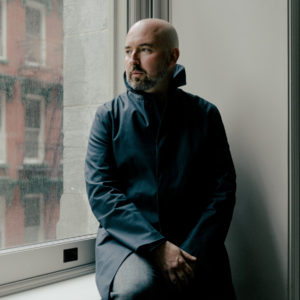 As homosexuality has become more and accepted, Queer Lit has the potential of becoming more and more conventional. Queer experiences in The United States–to use one example–are now mainstream. This is progress, but it also has the potential of making queer stories less distinctive. Douglas Stuart’s Shuggie Bain was a magnificent exception. By setting his first novel in 1980s working class Scotland, he presented a world where queer experience was very different from that of the straights. In his second novel, Young Mungo, Mr. Stuart returns us to this time and place–telling a story that is more complex, less predictable and ultimately more surprising.
As homosexuality has become more and accepted, Queer Lit has the potential of becoming more and more conventional. Queer experiences in The United States–to use one example–are now mainstream. This is progress, but it also has the potential of making queer stories less distinctive. Douglas Stuart’s Shuggie Bain was a magnificent exception. By setting his first novel in 1980s working class Scotland, he presented a world where queer experience was very different from that of the straights. In his second novel, Young Mungo, Mr. Stuart returns us to this time and place–telling a story that is more complex, less predictable and ultimately more surprising.
With his now familiar palette of black, white and grey, Mr. Stuart paints a picture of a time and a place where queers are seemingly universally hated. It is a world of random arbitrary vicious violence–much of it at the hand of his own brother, Hamish. Mungo’s life is even more gloomy than that of Shuggie’s if only because his own mother considers him “something less than human.”
Alcoholism looms large in this tale. And it is left to the reader to decide if it is drink or something darker that leads his mother to send her young son on a camping trip with two highly questionable characters. It shouldn’t be surprising, but it is nevertheless shocking when Mungo is raped by these men.
Of course, violence against queers isn’t limited to Mungo. a local is repeatedly bashed for being “a bachelor”. And gang wars between Catholic and Protestants seemingly spare no one. But this isn’t a story devoid of hope. There is a friendship, which turns into something more, with a Catholic boy named James. Nevertheless, it is wrong to call this book a love story. A hate story might be a more accurate description.
Near the end of this novel the protagonist asks himself how others can perceive something he tries desperately to conceal: namely his queerness.
As Mungo leaned over the water he focused on his reflection. He wondered what it was the men had recognized in him. Where was this signal he could not see, the semaphore he had never meant to send? Was it in how his eyes never quite met theirs, how they turned themselves down submissively? Was it in how he stood with his hands limp at his side, his weight on one leg? He wanted to find the signal and wanted to end its transmission.
It is a question bashed queers have been asking for years. How can they tell? The answer is, of course. They can’t. They’re just guessing. And bullies can always afford to be wrong.
Young Mungo is published by Grove Press.
4/12/2022